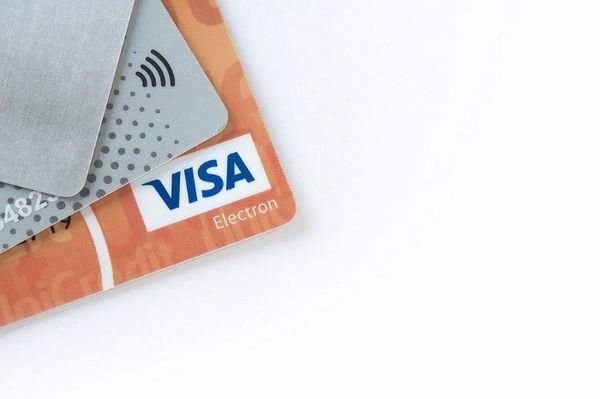
If you are contemplating on putting up an e-commerce store, now might be the most lucrative time to put that one big idea in action. Why? It has never been easier to start an e-commerce site. In fact, starting an e-commerce site might even be simpler than you think.
Your Site
Building your site has been made easier by various tools. The easiest route towards building your site is to sell your products through eBay, Amazon, or Etsy. These are large pre-existing e-commerce sites that allow you to put tip a store under their domain. If you wish to minimize competition and sell your products using your own domain, there are also tools that make it easier.
Shopify is currently the most popular e-commerce software. You can select from over two themes for your site and over 1,400 apps to add functionality to your e-commerce store. BigCommerce is another e-commerce builder that you can try. It focuses on leveraging different social media platforms to generate leads and increase customer conversion for your store.

Advertising Your Products
Marketing and advertising your products sold through your e-commerce sites are now easier. Google Ad Words, Facebook ads, and other social media sites have developed advanced algorithms to help you target your content for the most suitable users who might have a strong interest in your products. Unlike traditional advertising which tends to be expensive, digital marketing is a lot cheaper. especially because you can increase or decrease your advertising budgets depending on the analysis of your customer conversion. You just have to be careful in selecting only the most appropriate platforms and spending your money only on these sites.
Payment Gateways
Tools for accepting payments through your e-commerce sites have also Increased and have become much easier. Payment gateways such as Paypal and Payoneer help you charge your customers’ credit cards with ease. These tools have also made advancements for your customers to pay for your products and services real-time and without glitches.
Customer Service
Customer service tools like Zendesk help you provide better customer service even without having dedicated customer service personnel. Zendesk provides advanced features for creating customer support tickets, templatized solutions, self-help sections, FAQs, and other tools that help you track your customer service performance. Zendesk also collect all issues raised by your customers through phone calls, social media, email, or chat. Starting your e-commerce site is easier than you think. There is a myriad of tools to put up your site and generate earnings ASAP through advertising, payment options, and even customer service.

SaaS services for building an online store
For anyone looking to build a new business, e-commerce is currently hard to beat. According to research from shopping cart developers BigCommerce, 67% of Millennials would rather shop online than in a physical store. Advances in security, delivery, and software make e-commerce accessible for almost anyone, with the option to create a secondary income or a larger enterprise. One of the main choices for new business owners Is the platform they choose for their store. There are numerous software solutions, but a number of options stand out for their simplicity, effectiveness, and positive reputation.
Shopify
Shopify is one of the best-known names In the business, powering thousands of stores online. The key to Its success is simplicity, with beginners able to get started immediately. It is however, possible to scale a business massively using the Shopify platform. To create a store, you can choose from one of the varied themes, including free and paid options Additionally, there is a vast library of apps that can transform a store depending on your requirements With customer services working round-the-clock, you can also get quick answers to your questions.
Wix
Wix makes it easy to develop an e-commerce store without any previous experience. The service includes many attractive templates, with the ability to quickly add your own Inventory. With your store In place, you can then integrate with services like Paypal and major credit card providers. While Wix does not include the same number of features as Shopify, it is a quick way to create an eye-catching store.

Squarespace
Squarespace offers a similar service to Wix, focusing on beautiful design for less complicated stores Beginners will find Square-space easy to get to grips with, making use of their drag-and-drop design elements to build a store. The service is not just focused on design, though, with checkout, tax security, and inventory facilities ensuring your store provides a top class service.
Magneto
Magneto is a popular e-commerce solution, but It Is primarily used by larger companies with developers Beginners will struggle to make the best use of the product, but there is a partner program if you have the finances to invest. For those who want an advanced solution, Magneto also offers a Beat deal of customization In their extension marketplace.
BigCommerce
BigCornmerce has some similarities with Shopify, offering a number of advanced features without the compilations of Magenta Your site can be developed using one of a number of attractive themes, set up with the user-friendly CMS, and configured to accept payments with Paypal, Apple Pay, Stripe, and other options Similar to Shopify, the app add-ons enable you to upgrade your store in various ways with drop-shipping one of the popular options
WooCommerce
WooCommerce is an excellent choice for developers who like to use Word Press the plugin can be added to a Word Press site to transform it into an e-commerce platform.

Elements to Include on a New E-commerce Page
Developing a new e-commerce site will inevitably pose a number of challenges Along with suppliers, design, fulfillment, and payment processors,the website itself must be built to optimize sales and provide a positive user experience. Certain choices might be clear from the beginning, but there are various elements that can be overlooked. The following elements should all be considered for any e-commerce venture, offering the chance to improve the buying experience for all visitors.
HTTPS
Gaining an SSL certificate will indicate that your site is secure. Using the standard HTTP protocol will be flagged by all the major browsers, with many visitors being suspicious from the moment they land on your site. There isan argument to be made for all sites using HTTPS, but It Is particularly important for anyone who takes payments.
Wishlist
A wishlist feature helps visitors to remember the items they were considering for purchase, Increasing the likelihood they will eventually buy. Most people browsing your inventory will forget the items that were of Interest, so a wishlist helps them jog the memory. You could even send email reminders about particular items subscribers were interested in.

Contact Details
Contact details show your business is legitimate and not trying to stay hidden. There are sites that have been set up for illegal purposes, attempting to take money and credit card details from customers. Contact details help to increase trust while allowing visitors the chance to get in touch.
Live Chat
A live chat facility offers the chance to get a quick answer to a question. While email and phone numbers are suitable for some questions, a large number of visitors would rather speak to someone immediately via chat. The presence of a live chat option also works as a trust symbol, showing a professional level that many sites don’t achieve.
Shipping and Returns Information
Some of the most common questions for an e-commerce site relate to shipping and returns. Hiding this information will only irritate many visitors, ultimately leading to lost sales. Make shipping and returns information as clear as possible. simplifying your own processes wherever possible.
Payment Icons
Payment icons are useful for customers and help to earn trust. Quickly seeing the payment options available removes a doubt that some customers might be experiencing. Additionally, the trust factor of seeing well-known symbols works to provide credibility to your own site.

Social Buttons
The simple addition of social buttons can add an extra promotional element to your e-commerce site. Social buttons can be featured on a product page, allowing visitors to remind themselves and their followers about a product. Also, including social buttons on the purchase confirmation page will add social proof to your site.
Clear Navigation
Navigation will vary depending on the size of the store. It is important to make navigation prominent, accessible, and user-friendly, helping visitors to find the items they want. E-commerce stores tend to follow similar design structures, so there is no need to radically overhaul a standard design. However, focus on ensuring products are correctly categorized In a logical hierarchy.
Payment Button
Of course, it is essential to include a payment button on your product pages. Simply using any button or a text link, though, won’t be enough. Your payment button should stand out, typically using an orange or red color to draw attention. Create a standardized button that can be used across the whole site, but test a few options first.
 Need SEO for your website? Visit KEYSOME
Need SEO for your website? Visit KEYSOME
